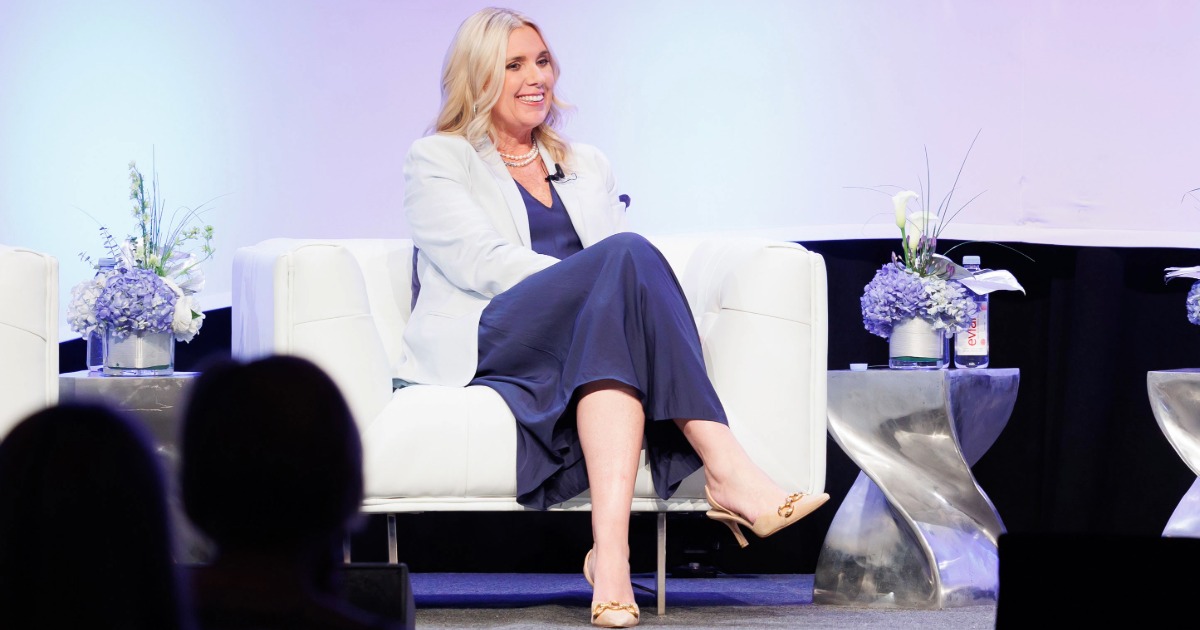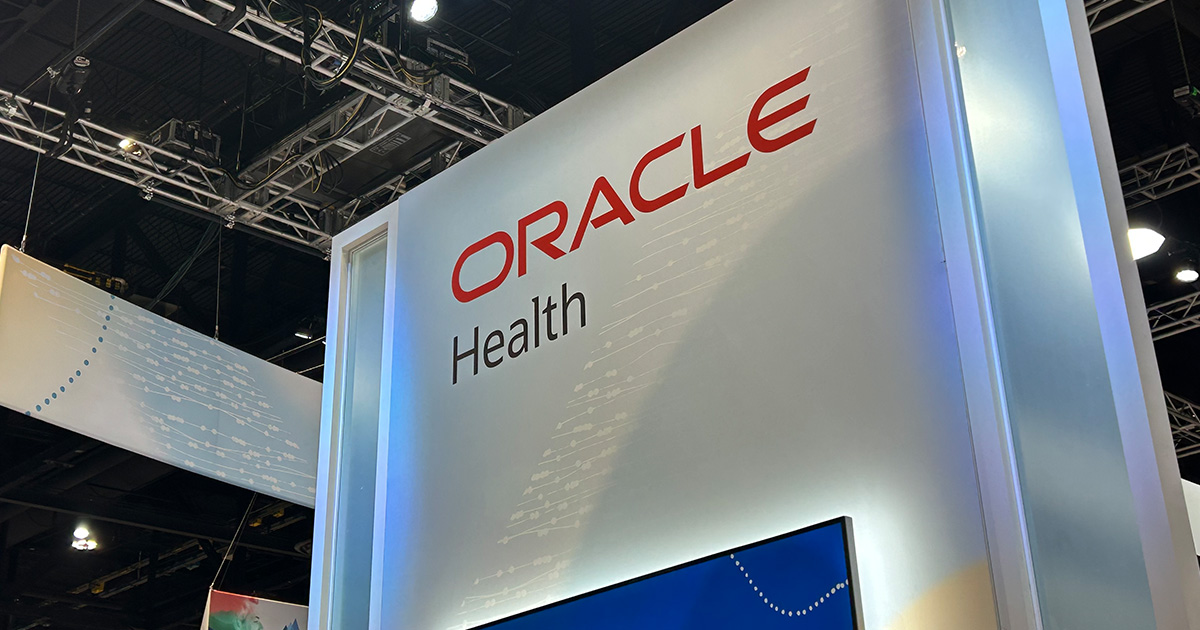
Kelli Garrison is passionate about what she calls the "power of translation" – the ability to understand informational needs, verify and validate information, and communicate effectively across diverse roles. And she has the bona fides to show she is an effective translator.
Garrison – whose background is as a healthcare provider, a pharmacist to be precise – is a member of the prominent Epic Emeritus Program. She is an advisor for CIOs, IT vice presidents and ancillary apps professionals. Her role in the EHR giant's emeritus program includes at-the-elbow implementation support and advisory support in various roles including, but not limited to, clinical informatics and IT leadership/mentorship.
In addition to her work as an Epic Emeritus CIO, she is an independent health IT consultant as CEO and founder of Verdant Consulting, based in Charleston, South Carolina. Her business focuses on strategic advisory services, clinical informatics and clinical content development, and healthcare IT consulting. Areas of expertise include workflow development and redesign, clinical decision support, employee engagement, leadership coaching, and using the power of translation to transform and innovate.
We sat down with Garrison to discuss what this power is, how it can help healthcare professionals shift gears to different positions, why it surfaces the need to surround oneself with supportive mentors and teams, and how it can enable the best working environment and a path to success.
Q. You are passionate about the "power of translation." Please elaborate on this power and what it means for all executives and clinicians with any health IT involvement at hospitals and health systems.
A. Translation in and of itself is incredibly powerful, just as we see with language translation from one language to another – the ability of the translator to understand both languages and the context of the conversation, as well, leads to better understanding, comprehension and, ultimately, to trust. This can be applied to healthcare – and, in particular, health IT.
Whether it's an operational change or a large IT project, innovation or optimization in healthcare is complex, as we all know. It usually contains many different stakeholders, all of whom are using a slightly different language. They have different perspectives or biases to lead to the conversation or the work at hand.
Being able to understand those different languages, those different skill sets, those different perspectives, helps in a couple of different ways. It bridges the communication gap. If you're a good translator, you can hear what an administrator is saying and translate that to the IT analyst, so they both understand each other and there's no gap in understanding.
It also helps consider all perspectives so the right technology is selected. This also can help with collaboration. It enables all voices to be heard. Then, as I mentioned before about language translation, it enables relationships and trust to be developed, which then leads to smoother adoption of the product at the end.
It also can help drive adoption and utilization. In this way, you can relate new technologies to the clinical workflows already in hand or the operational workflows – not just how it functions. Being able to attribute it to the patient or to the clinician in a way they understand – that leads to buy-in.
Then, lastly, you want to make sure you're solving the right issues. A previous mentor of mine said, "Someone's going to come to you and ask you or tell you what they want, but you need to help them find out what they truly need."
You do that by digging in, by asking questions, by listening. By engaging and bringing the right people to the table, you can understand what they truly need to solve their problem or create the correct path for that project.
You do this in a few ways. You listen to the why, you discover the how and you validate the what. And a lot of that is based on principles of really diving in and listening with empathy and with understanding. So, I do believe that, in the end, the power of translation fosters understanding of all the different perspectives. It aligns the needs, and it brings you to a valuable solution for that organization.
Q. The power of translation has allowed you to take on diverse leadership roles, even when an initial career path has changed over time – from pharmacist, to medication safety and quality, to IT director, to associate CIO, to an academic medical university, and now, to business owner and consultant. Please explain how that power has helped you shift gears so health IT executives at hospitals and health systems who are working their way around different positions can learn from your experiences.
A. This is something I reflected on after leaving my academic medical university role and going into the consultant role. I was asked to speak to a college of pharmacy graduating class at their ceremony and really wanted to impress upon them as a graduating doctor of pharmacy that that label did not pertain just to the pharmacy world as it did to me many, many years ago. That translation process can be applied broadly to how you advocate, how you problem-solve, how you educate, how you innovate and how you lead.
In the crux of this, in my reflection, I found two things. One, it's the power of people, and two, it's the power of translation or transferable skills. So, understanding your transferable skills, understanding your relationships that are around you, even as your career direction shifts, that helps you grow and that helps you look at your own superpowers, whether that's being an advocate, being that problem-solver, translator, leader, innovator, whatever superpowers you feel you have.
Growing those and also seeing what other skills may need to be grown in the new role that you're walking into. The one thing I always encountered in my last 25 years is I'd have other leaders ask me, "What's my five- to seven-year plan?"
That's a common question, especially in leadership roles. I always felt off because I didn't have a true answer to that question, because I always allowed myself to be open to opportunities when they present themselves.
So, staying open-minded and willing to participate in something I may not be 100% ready for or feel like I'm ready for. Being able to see that path and say, "You know what? This might not be 100% me, but let's try it. Let's do this." I think a lot of it is building relationships, being open to opportunities, being authentic and generous with yourself as well as with your teams, especially if you're in a leadership role, understanding that leadership role and how to build other leaders around you. Being a lifelong learner and educator.
Then, understanding you might not be the one to know exactly what to do, but connecting those that have those skills or that expertise allows the next path to open up. I've stepped back to learn. I learned this not necessarily by reading or listening to podcasts, which obviously those all help, but it was actually watching mentors and observing how they did these things in their career transitions, as well.
Q. You suggest surrounding oneself with supportive mentors and teams is a crucial part of the power of translation in health IT. Please talk about why this is so and what health IT executives can do to foster good mentors and teams?
A. Early in a career, it's hard to really understand that mentor-mentee relationship because most of the time in your early career you're the mentee, not the mentor. And that shift doesn't really present itself like, "Oh, now I'm shifting from mentee to mentor."
As I mentioned, one of the big things is observation. So observation of key leaders, or not even leaders, key people, not only in your career, but in your personal life, observing how they interact with others, observing how they do their work, figuring out what works for you, and seeing those things that you're like, "That didn't feel right, or might not have been the best way to handle a situation." Then, building on those experiences over time.
I've also learned from my mentors that listening and being active with your team, especially if you're a leader, and not just solving the problem for your team, that helps build leaders around you, whether they're leading a project or leading a team themselves. It's all about the relationship. It's all about building trust.
Throughout my leadership career, it has been really knowing the person and knowing the team and how they interact, and every person and every team was different, that your leadership style had to mold itself to who you were working with, not necessarily a one-and-done leadership style.
That's where healthcare IT executives can really step back and look at how they lead differently based on the situation they're in. And how do I mentor others to become the best leader they can be?
Q. How would you suggest all executives and clinicians, with any health IT involvement at hospitals and health systems, share this power of translation with their colleagues to enable the best working environment and an excellent path to success with clinical and administrative technologies?
A. It starts with understanding their experience and how their experience impacts this. So, for example, as a clinician myself, that experience of having worked directly at the patient bedside in patient care, deeply understanding the clinician's need, not just as a pharmacist understanding pharmacy but working with nurses, working with respiratory therapists, working with providers, all of these things culminate to really understanding workflow issues and terminology.
Again, it builds all those different languages of what is important to each of those clinicians and what are challenges to each of those clinicians. This helps when you understand your own experience in that process; then, that helps you effectively communicate that with the IT teams and providing them with insight. That also builds your credibility and your relationship and your trust with those different perspectives.
Also, understanding IT. I'm a pharmacist. I'll always be a pharmacist. I am not a traditional IT analyst by any means. But along the way to build my IT acumen, I leaned on those who had that experience to teach me.
A lot of them did not realize they were teaching me. If something came up about best integration strategies of third-party vendors to EHRs, I would pull in my integration team, and I would pull in those experts, and I would listen to how they spoke, and then how they would solve problems.
Then, I could be the translator between what they were saying technically to the clinicians or the administrators on the other line. So, I leaned on them. Now, I can sit back, and I have more knowledge, thankfully from my teams of experts, that helps me continue to build that IT knowledge. And then having the strategic vision of having to guide your teams along the way.
So, understanding how you can take the strategic vision you're hearing from the administration team, but build that in a way that translates effectively to your team. Again, it goes back to those different languages. Your teams you're leading may not really grasp the administrative language we typically hear. How does it impact them? How does it make them feel? How we accomplish this as a team to meet that strategic vision is important.
Doing that in an empathetic approach over time allows your team to trust you, but also you've built the relationship with the administrators for your team to trust the administrators. In essence, being a clinical IT leader has helped me be that translator to progress mutual understanding, to overcome miscommunications, but also to help build successful teams, bring on new leaders, and have technologies that work not only for our users but for our patients as well.
Click here to watch a brief video of bonus content from Epic Emeritus CIO Kelli Garrison on which legacy applications to retain, upgrade or retire during an application rationalization initiative.
Follow Bill's health IT coverage on LinkedIn: Bill Siwicki
Email him: bsiwicki@himss.org
Healthcare IT News is a HIMSS Media publication.
WATCH NOW: Chief AI Officers require a deep understanding of the technologies and clinical ops


